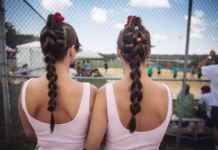“Interview” features Q&As with both professionals and users of the mental health system on topics of special interest to parents and families. They are designed to provide a closer look at new research, trends, and people.
Last fall, revelations about a hidden part of the U.S. mental health system exploded across the news media: youth residential treatment centers. Sometimes called the “troubled teen industry,” these places promote themselves to parents and government agencies as supportive, therapeutic environments for struggling, disruptive, or “mentally ill” children. However, such facilities are emerging as anything but. In a widely read op-ed and congressional testimony, celebrity Paris Hilton detailed her traumatization at several such centers and called for systemic reform.
Around the same time, the National Disability Rights Network released a report, “Desperation Without Dignity,” that documents this trend at for-profit residential treatment centers and makes recommendations for change across sectors. The report summarizes a review of investigations by the nation’s Protection and Advocacy Agencies (P&As) and others across 18 states.

Its main author, Diane Smith Howard, J.D., is NDRN’s Managing Attorney for Criminal and Juvenile Justice at the National Disability Rights Network. Her work focuses on conditions for children, youth, and adults with disabilities in institutional systems including juvenile justice, child welfare, education, mental health and refugee resettlement systems. Among other things, she collaborates with civil rights coalitions to advocate on these issues within the federal government.
Here, Smith Howard answers questions about some of the NDRN’s most important findings and offers her perspective on the issue based on over 25 years as a litigator in juvenile and education law.
Answers have been edited for space and clarity.
Q: Can you briefly introduce the NDRN and explain what Protection and Advocacy Systems are?
A: The National Disability Rights Network (NDRN) is the national, nonprofit membership organization for the federally mandated Protection and Advocacy (P&A) Systems and the Client Assistance Programs (CAP) for individuals with disabilities.
P&As and CAPs work to improve the lives of people with disabilities by guarding against abuse; advocating for basic rights; and ensuring access and accountability in health care, education, employment, housing, transportation, voting, and within the juvenile and criminal justice systems.
We’re the only legally based advocacy organization established by Congress to protect the rights of all individuals with disabilities. As part of that mandate, our network includes agencies in every state and U.S. territory.
Q: What are residential treatment centers, and what type of children and youth wind up in them?
A: Residential facilities are facilities to which children and youth are sent when there is a belief that available community-based services are insufficient to meet their needs. The facilities profiled in this report receive youth from the child welfare system (generally funded by Medicaid), public schools, juvenile justice systems, and private pay.
Q: What prompted this study, and why now?
A: P&As reported a number of facilities with high numbers of abuse and neglect complaints.
Q: How did you conduct the research? Were these findings due to routine visits/inspections or due to reports, or both?
A: Both monitoring visits and as the result of complaints. We also reviewed media reports and scholarly works.
Q: If the report had a headline, it would seem to be “kids are not safe here.” Let’s go over some of the major categories of findings on what’s happening in these facilities and their effect on the children there. One of the big findings was physical abuse. Can you talk a little about that?
A: There’s actually a rather wide variety of different kinds of physical abuse that the PNAs saw that informed the report. There’s restraint and seclusion, which I’m sure your readers know about, and all the dangers that go with that overuse of seclusion for long periods of time. And even when the facilities said that they were using a certified program, there was no indication that they were.
In addition, some of the staff were not background-checked and some of them had assaultive histories. And so, it was not too surprising that that is how they behaved. But in a lot of cases, there was so little therapeutic value to the facility or to the program that these [physical] contacts were not in any manner therapeutic. They were for the purpose of control.
So, as I’m sure you can imagine for kids who were abused as children… this just furthers their trauma. In some facilities, there was a lot of peer-on-peer violence in addition to staff-on-child violence. And in at least one case, there was some evidence that staff was initiating violence between children for their own entertainment. …The worst example would of course be Cornelius Frederick, who passed away.
Q: One of the other things you found was use of restraints. Can you summarize the case of 16-year-old Cornelius Frederick?
A: Cornelius was at a Sequel [Youth and Family Services] facility in Michigan. He was a former foster child who was living with his grandmother. …. He was a larger kid and he had several of the risk factors for the negative manifestations of prone restraint. He apparently was seen throwing a sandwich in the cafeteria. Staff tackled him and [put him] in a prone restraint, during which time he asphyxiated.
Q: You also found evidence of sexual abuse at such facilities.
A: Yes. It’s not as widespread, at least as far as we know, but there definitely was. In addition, some of the young women in the facilities had been sexually abused prior to coming to the facility. And so the physical restraints by male staff, or in some cases, just the lack of appropriate boundaries between adult male staff and female patients or residents is traumatizing. Sometimes they would have males guarding the bathroom.
Q: Another one of the findings was emotional abuse. Can you talk about that?
A: There’s, again, a wide variety of things. One of the techniques we saw was pure shame. So, if a young person violated a rule, the other children were told to ignore that person. It was also used sometimes as a form of conflict management. If two kids weren’t getting along, everyone would be told to stop talking. So those kinds of treatments are abusive. And then in addition, staff would tell the children terrible things like “You were unsuccessful with this suicide attempt, are you gonna get it right next time?”
Q: It sounds like the facilities and the conditions, including diet, were also very inadequate in a lot of cases. Decrepit facilities, vermin, lack of water, hunger.
A. Yes. Just heartbreaking. I’ve been in this business for a long time, and it takes a lot to shock me, but to have teenagers who were getting half the calories they needed … never mind the poor quality of food. I’m sure that a lot of food is just not nutrient-dense to start with, but just not even enough food [was provided in some cases].
Q: Can you summarize and comment on the mental health treatment, or lack thereof, at these sites?
A: It is often reported that there are not psychiatrists and other medical providers on site. In addition, youth may not participate in one-on-one therapy, or groups may be run by the youth themselves.
Q: One of the things the report talks about is “behavior management” through chemical restraint—psychiatric medication.
A: There’s a couple of different pieces to that. One is, kids are put on too much medication. Which is one problem: There’s medication that is not properly managed that needs to be managed. And then there’s medication that’s [used] purely for the purposes of chemical restraint. Kids are prescribed off-label medications, medications that are not approved for children. And sometimes in generous quantities.
We found situations where all the kids in a particular part of the facility would have the same medication regime and they did not have the same diagnosis. So that was a concern. And then even if anytime a child gets [prescribed] a significant medication, like Thorazine or Haldol, they need to have their med levels checked… to make sure that it’s not causing organ damage.
So many of these kids were not getting medical oversight. …. And then the last thing is this concept of “booty juice,” a PRN [“as needed”] medication that is administered [in the buttocks] to young people to sedate them, an off-label use…. PRNs may be used to sedate agitated children instead of providing interventions and teaching that will assist the child [to manage their emotions].
Overall, were the abuse and neglect that the report found better or worse according to race, gender, or another particular trait in these children?
These facilities have a disproportionate number of children of color placed in them.
Is there any particular corporation and/or states that had particularly egregious track records?
There are quite a few companies named in the report. Sequel, Devereaux, UHS, Acadia….It’s often not evident from the name of the facility [that they are run by these companies].
What surprised you the most about the information in the report?
Personally, it was the intensity of the abuse and neglect. P&As often encounter abuse and neglect in their work, but this is significant even by P&A standards.
Most people would say, how can this be happening? What is the situation with oversight and accountability?
There are very few regulations and next to zero government oversight. P&As do monitor [them], but in some states, there are many facilities.
This report was specific to for-profit private facilities, typically the chains like Sequel and Deveraux, and they have a corporate structure that makes it difficult to regulate them. In many states, they are not required to be licensed. So, there may be no one coming in other than the PNA. And if they are distant from the [children’s] families, sometimes family contact is limited… A child welfare agency might send a child to a facility out of state without going there to meet with the child even on a semi-regular basis, so they’re not there to see it [either]. What’s unique about the PNAs is we have access, and we go to these facilities, but it’s not enough. The government should have an oversight rule.
What are the report’s top recommendations on what governments and other authorities can do to end these problems and ensure accountability?
Medicaid is one of the primary funders of these placements, particularly for children who come from the child welfare system. Medicaid reform is a key element to this. In addition, just requiring that facilities comply with the Conditions of Participation, [meaning] that they’re not reporting services as being provided that have not been provided. In addition, there’s legislation pending right now on how to address the overall industry, the AACA [Accountability for Congregate Care Act].
The report says the problems at residential facilities have not been resolved. Has there been any constructive response since the report came out?
Yes, a great deal of media and legislative activity…. [It’s] very promising, although there remains a long row to hoe. We are grateful to Paris Hilton and other powerful advocates for using their funds and influence to raise awareness of these issues as well… And one of the most important drivers of this whole exposé has been the media all over the country… A lot of survivors have gone to Twitter and Instagram and TikTok to talk about their stories.
What can parents and families do if their child is in such a facility, or to find out about possible issues before sending them there?
They should visit and ensure they can maintain regular communication with their children. The inability to reach one’s child should be a red flag. They should follow up on anything that does not seem right and reach out to their P&A and government authorities. Trust your instincts!
Certainly, parents need to talk to other parents, because a lot of times people are just desperate— they’re so, so hoping to find a place that can help their child in a way that’s safe. And they’re informed about these places, and they seem really great. If parents in the community of kids who have these types of needs can get information out about which places are better than others; peer sharing, I think, is really critical. And then when parents are themselves looking into a placement, they should just be very, very cautious. They should Google and read and visit and talk to people and don’t necessarily believe everything they’re told.
I’m sure there are good places out there. Just as [with] any other situation, you don’t send your children to a friend’s house if you don’t know the family. These people are going to be caring for your child and supposedly providing counseling. So, what sort of counseling do they have? What are the credentials, who’s on the premises….How often is there a group and is individual therapy provided or just group, since sometimes the counselors that are doing group are not even trained?
The report states that the ultimate goal is to reduce the number of kids entering institutional care to zero. Is it ever appropriate? If not, what’s NDRN’s vision of a better way?
One of the primary reasons for the overuse of these facilities is the lack of community-based services that meet children’s needs. That is the most important first step. If that problem is solved, we can address whether or not there is a continuing need for these facilities.
***
Editor’s note: The AACA is being written and co-sponsored by Rep. Ro Khanna (D-CA) and Sen. Jeff Merkley (D-OR), who plan to introduce it in 2022. Among other things, the bill is expected to establish a “bill of rights” for youth in residential facilities, outline minimum standards of care, and standardize regulation across states.
Resources
National Disability Rights Network
Breaking Code Silence (a survivor-led nonprofit whose goals are “to eradicate institutional child abuse and empower survivors to heal and promote positive social change through self-advocacy.”)















I’m afraid I find this blog considerably problematic. First of all, I find the title of the NDRN’s report, “Desperation Without Dignity” if not rather Orwellian, then certainly deceptive. Would the report not be more accurately tilted “Institutional Child Abuse with Impunity”? Forgive me here if, by only reading this interview and not the report itself, I’ve missed something. And where was NDRN, etc., prior to Paris Hilton’s wealth and fame bringing these abuses to light? More, when Barrister Howard refers to the overuse and off-label drugging of children as “And sometimes in generous quantities”, is rather noxious. There’s more, but that’s enough irrelevance to invest in for one day.
Report comment
I agree, Kevin. Because of their “corporate structure”, there’s nothing a government agency (the supposed mission of which is to protect children and people with disabilities) can do to stop these places abusing children? How about shutting them down. Should we just hope that the media stays on the the case, since the government’s hands are tied?
Report comment
Kate,
You make a great point. Other countries have shut down our USA TTI “schools”.
Mexico raided Casa by the Sea and successfully liberated the imprisoned kids in 2004
Re: the government. Not to state the obvious, but their hands aren’t tied. Their hands are dirty.
Report comment
Kevin,
I fully agree.
It is problematic and reductivist. It seems like there’s a line being towed. Almost like this narrative is excusing the high profit centers… Yes, they are all abusive. Children are hidden away to be punished. Obviously, abuse will occur.
An exposé on the most obvious aspect of carceral centers- that they are abusive- does nothing to challenge the corruption and secrecy that maintain this industry.
As a TTI survivor, I want acknowledgeable of reality, not to be further objectified. We are not fodder for spooky trauma stories.
Further, this article seemed to blame the low wage workers for the harm. The TTI is worse than mean, low-paid employees.
They are told to bully children. This is the design! The shame therapy comes from a cult called synanon which has ties to much of the wealth in the US.
Mitt Romney, for example, made a fortune from the Utah “schools”. Utah’s trafficked “troubled teens” creates much of the state’s revenue.
Nothing in the report explains their scale and power nor their appearances of legitimacy
an exposé on the tti should explore:
1) attack therapy
2) solitary confinement for children
3) constant monitoring
4) no access to outside world
5) financial collaboration with child psychiatrists
6) not guaranteed the same rights as prisoners.
7) education consultants who work as head hunters for the tti
8) transportation services (hired by parents to kidnap kids to the industry)
9) mandatory group confessions and shame punishments
10) heightened interrogation tactics (like guatanomo bay)
11)Absolutely no barriers to entry for those private pay children.
Kids are regularly sent by parents for minor disagreements
12) Absolutely no rights for family who dislike the TTI and want to free their TTI incarcerated relative. It is extremely difficult to get the kid out once the parent signs the paperwork because the parent gives the TTI partial custody
13) Some have expensive marketing campaigns and widespread advertising.
14) Taxpayers fund the TTI
15) They are fully legal. Laws protect them from accountability
While I am enormously grateful for these inquiries and can support the need to convey meaning to the non-TTI survivors who are unaware, I think there should more
The TTI is larger than people care to admit and to relegate it to this removed, seperate issue is unhelpful. It’s everywhere and has connections to every other aspect of the MH system. Bravery is needed to see the truth.
Report comment
If reduction is needed to convey the importance, I will summarize.
A multi-faceted cult now owns American youth. They operate as juvenile detention centers, the foster system, the mental health system, and more.
Report comment